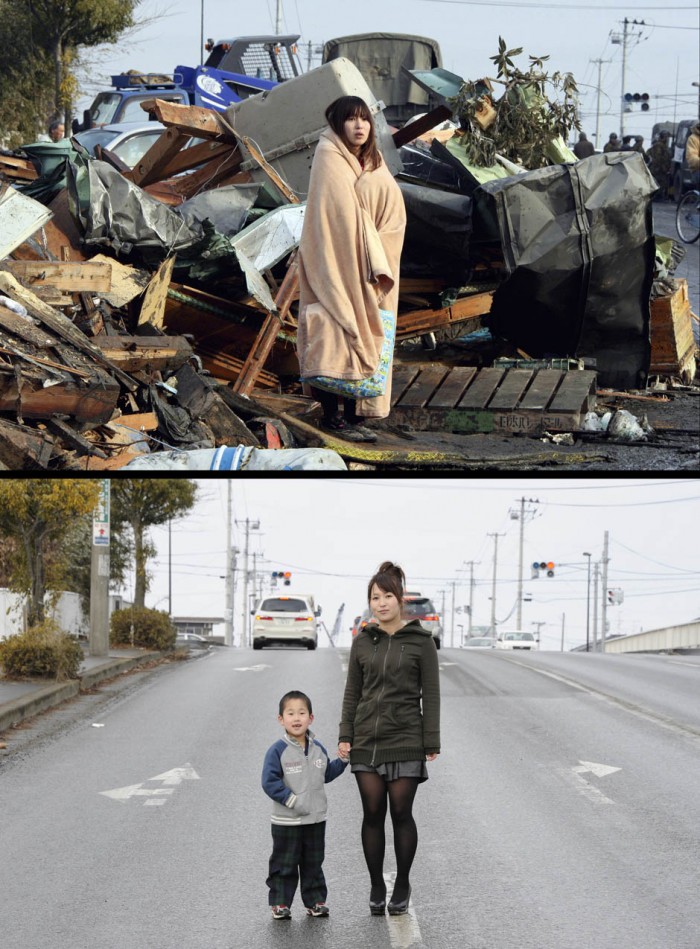Mobile: Apple iPhone 3GS
Application: Instagram




The All famous Moon Landing picture has been the most controversial picture in history. As many conspiracy theories claim that some elements of the Apollo program were hoaxes staged by NASA and members of other organizations, however none of the accusations have been proved absolutely correct.
“The Falling Man” is a picture taken by Richard Drew at 9:41:15 a.m., on September 11, 2001 of a man falling from the WTC during the Sep. 11 attacks in New York City. The man in the picture still remains unknown.
Another photograph of the 9/11 attack taken by Bill Biggart at 10:28 am on September 11, 2001. Moments later, he was killed by the collapse of the second tower. Biggart’s body was found four days later, and although his film cameras had been destroyed by falling debris, his digital camera contained a flash card intact with 150 photos—of which this was the very last. The second tower collapsed at 10:30 am.
The picture of Guerrillero Heroico of Argentine Marxist revolutionary Che Guevara taken by famous Cuban photographer Alberto Korda. The image became a symbol of the 20th century and later appeared on Tattoos, T-shirts, & walls around the world.
The 11-mile high mushroom cloud over Nagasaki, August 9, 1945.
Lawrence Beitler took this iconic photograph on August 7, 1930, showing the lynching of Thomas Shipp and Abram Smith. It sold thousands of copies, which Beitler stayed up for 10 days and nights printing them. It has become iconic over the years as it is one of the best & most recognisable images of lynchingwhich at the time was commonplace, but now serves only as a reminder of the pre-Civil Rights era. The photo shows a crowd that have turned out to view the lynching, and the audience a mixture of anger and fulfillment. The photo was so popular it has been the inspiration for many poems and songs down the years.
The Kiss photo by Alfred Eisenstaedt Year 1945. This photo became life magazine cover’s picture of V-J Day celebration when Japan surrendered to US. Oddly this photo was stage. Nevertheless it captures the moment of jubilation in a right note and defines American history.
“Raising the Flag on Iwo Jima” is an historic photograph taken by Joe Rosenthal on Feb.y 23, 1945. It depicts 5 United States Marines & a U.S. Navy corpsman raising the flag of the US atop Mount Suribachi during the Battle of Iwo Jima in World War II. It became the only photograph to win the Pulitzer Prize for Photography in the same year as its publication, & came to be regarded in the US as one of the most reproduced photograph of all time.
This photograph is taken by Stanley J. Forman of 2 falling girls while working for the Boston Herald Firefighters. One girl died at the spot, while ther other lived.
‘Tank man’ or ‘the unknown rebel’ shows an act of courage and is the nickname given to an anonymous man who stood in front of Chinese tanks during riots in Beijing June 5, 1989.
4 people claim to have took photos of the event, but the most reproduced image, & the most famous was by Jeff Widener.
The Battle of Gettysburg” picture taken byTimothy H. O’Sullivan is the most bloody bath battle in the American Civil War.
This photograph was taken by Eddie Adams Eddie Adams which not only earned him a Pulitzer Prize in 1969, but also went a long way toward souring Americans’ attitudes about the Vietnam War.
This picture is taken by Mike Wells, a white missionary in north-eastern Uganda while holding the hand of a starving African boy. He took this picture to show the extent of starvation in Africa.
In June of 1963, Vietnamese Mahayana Buddhist monk Thích Quảng Đức burned himself to death at a busy intersection in Saigon. The self-immolation was done in response to the persecution of Buddhists by South Vietnam’s Ngo Dinh Diem administration.
The most shocking photo among all depicts a starving Sudanese child being stalked by a patient vulture. It is a horrific picture that gave people a true look at the dire condition in Sub-Saharan Africa. Kevin Carter, who took the photo, won a Pulitzer Prize for this work. Kevin then came under a lot of scrutiny for spending over 20 minutes setting up the photo instead of helping the child. Three months after taking the photo, he committed suicide.